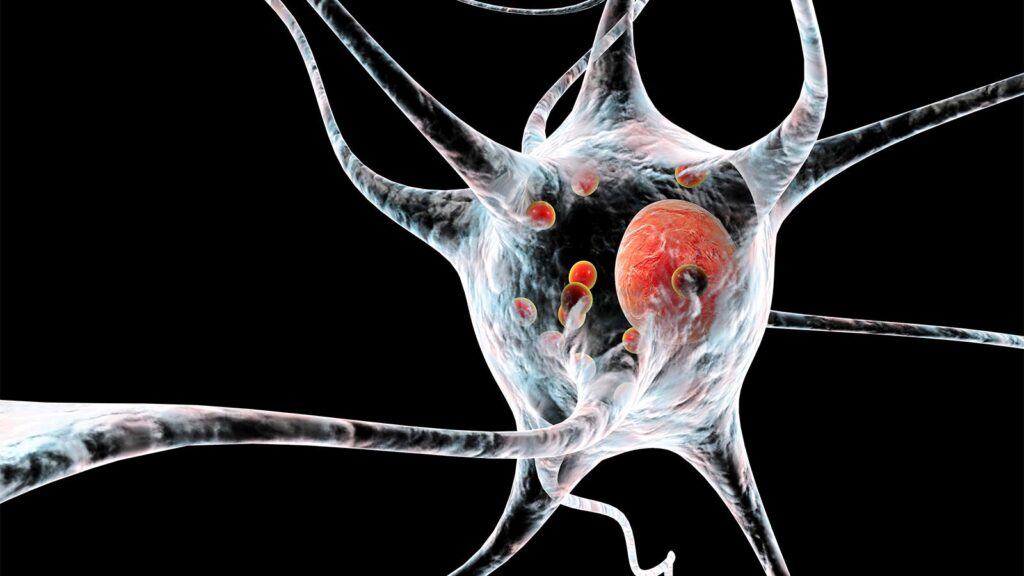The glucagon-like peptide-1 (GLP-1) receptor agonist lixisenatide (Adlyxin) led to less progression of motor disability compared with placebo in early Parkinson’s disease, the phase II LIXIPARK trial showed.
At 12 months, motor scores on the Movement Disorder Society-Unified Parkinson’s Disease Rating Scale (MDS-UPDRS) part III improved by 0.04 points in the lixisenatide group and worsened by 3.04 points in the placebo group, a difference of 3.08 points (95% CI 0.86-5.30, P=0.007), reported Olivier Rascol, MD, PhD, of the University of Toulouse in France, and co-authors.
Nausea occurred in 46% and vomiting in 13% of lixisenatide-treated participants, the researchers said in the New England Journal of Medicine. Secondary endpoint results did not differ substantially between groups.
“In participants with early Parkinson’s disease, lixisenatide therapy resulted in less progression of motor disability than placebo at 12 months in a phase II trial but was associated with gastrointestinal side effects,” Rascol and colleagues wrote. “Longer and larger trials are needed to determine the effects and safety of lixisenatide in persons with Parkinson’s disease.”
The GLP-1 receptor is present in the brain, and agonist activity is thought to be anti-inflammatory by reducing microglia activation. Observational research has shown that Parkinson’s incidence is lower among people with diabetes treated with GLP-1 receptor agonists or dipeptidyl peptidase 4 (DPP4) inhibitors compared with other diabetes drugs.
Several GLP-1 receptor agonists are being tested as potential Parkinson’s treatments. A single-center trial of exenatide (Byetta, Bydureon) showed positive effects on motor function. A pegylated analogue of exenatide known as NLY01 failed a phase II trial but suggested benefits for patients younger than 60.
“Producing a convincing demonstration of a disease-modifying, neuroprotective effect in Parkinson’s disease is a difficult task,” observed David Standaert, MD, PhD, at University of Alabama at Birmingham, in an accompanying editorial.
In LIXIPARK, the difference in scores MDS-UPDRS scores after 12 months of lixisenatide treatment was statistically significant but small, Standaert noted.
“The importance of this finding is not the magnitude of the change but what it portends. Indeed, the primary concern of most patients with Parkinson’s disease is not their present condition — it is the fear of progression of the disease,” he wrote.
“If a three-point improvement in score on the MDS-UPDRS is the most that can be achieved with lixisenatide, then the value of treatment with the drug may be limited (especially in view of the adverse effects),” he pointed out. “On the other hand, if the benefit of lixisenatide is cumulative, adding another three points each year over a period of 5 to 10 years or more, then this could be a truly transformative treatment.”
Lixisenatide was approved to treat type 2 diabetes in 2016. In 2023, drugmaker Sanofi said it would no longer be sold in the U.S. based on a business decision, not for safety or efficacy reasons.
LIXIPARK enrolled 156 people whose Parkinson’s disease had been diagnosed less than 3 years earlier. All were on a stable dose of medications to treat symptoms, and none had motor complications.
Participants were randomly assigned to daily subcutaneous lixisenatide or placebo for 12 months (78 people in each group), followed by a 2-month washout period. Demographics in each group were similar, and the mean duration of disease from the time of diagnosis was 1.4 years in both groups.
More than a third of participants (36%) in the lixisenatide group had unacceptable side effects on the target dose of 20 μg per day and switched to a reduced dose of 10 μg per day.
The primary endpoint was the change from baseline in MDS-UPDRS part III scores — which range from 0 to 132, with higher scores indicating greater motor disability — in the on-medication state at 12 months.
Baseline MDS-UPDRS part III scores were 14.8 in the lixisenatide group and 15.5 in the placebo group. At month 14, mean scores in the off-medication state were 17.7 with lixisenatide and 20.6 with placebo.
Other secondary efficacy measures were mostly similar in the two groups at month 6 and month 12. Mean changes from baseline in the levodopa equivalent daily dosage were 35.8 mg per day with lixisenatide and 31.3 mg per day with placebo.
“The secondary endpoints provide no definite support for the primary endpoint results, and longer washout periods may be necessary to determine whether lixisenatide therapy has a long-lasting effect,” the researchers said. No imaging biomarkers were used in the study, and whether any drug effect on motor scores persists with longer exposure or at other stages of Parkinson’s is unknown.
Rascol and colleagues also noted that they “tested only one dose of lixisenatide, on the basis of recommendations for the treatment of diabetes mellitus, and other doses might have better or worse effects in persons with Parkinson’s disease.”
Disclosures
This study was supported by grants from the French Ministry of Health and Cure Parkinson’s, in partnership with the Van Andel Institute.
Rascol reported relationships with AbbVie, Adamas, Biogen, Fundacao Bial, Lundbeck, Jazz, Sunovion, and Takeda. Co-authors also reported relationships with industry.
Standaert reported relationships with AbbVie, Alnylam, Biohaven, BlueRock, Curium, F. Hoffmann La-Roche, Lilly USA, McGraw-Hill, Sanofi, and Theravance.
Primary Source
New England Journal of Medicine
Source Reference: Meissner WG, et al “Trial of lixisenatide in early Parkinson’s disease” N Engl J Med 2024; DOI: 10.1056/NEJMoa2312323.
Secondary Source
New England Journal of Medicine
Source Reference: Standaert DG “GLP-1, Parkinson’s disease, and neuroprotection” N Engl J Med 2024; DOI: 10.1056/NEJMe2401743.
Please enable JavaScript to view the comments powered by Disqus.
Source link : https://www.medpagetoday.com/neurology/parkinsonsdisease/109487
Author :
Publish date : 2024-04-03 21:20:35
Copyright for syndicated content belongs to the linked Source.
